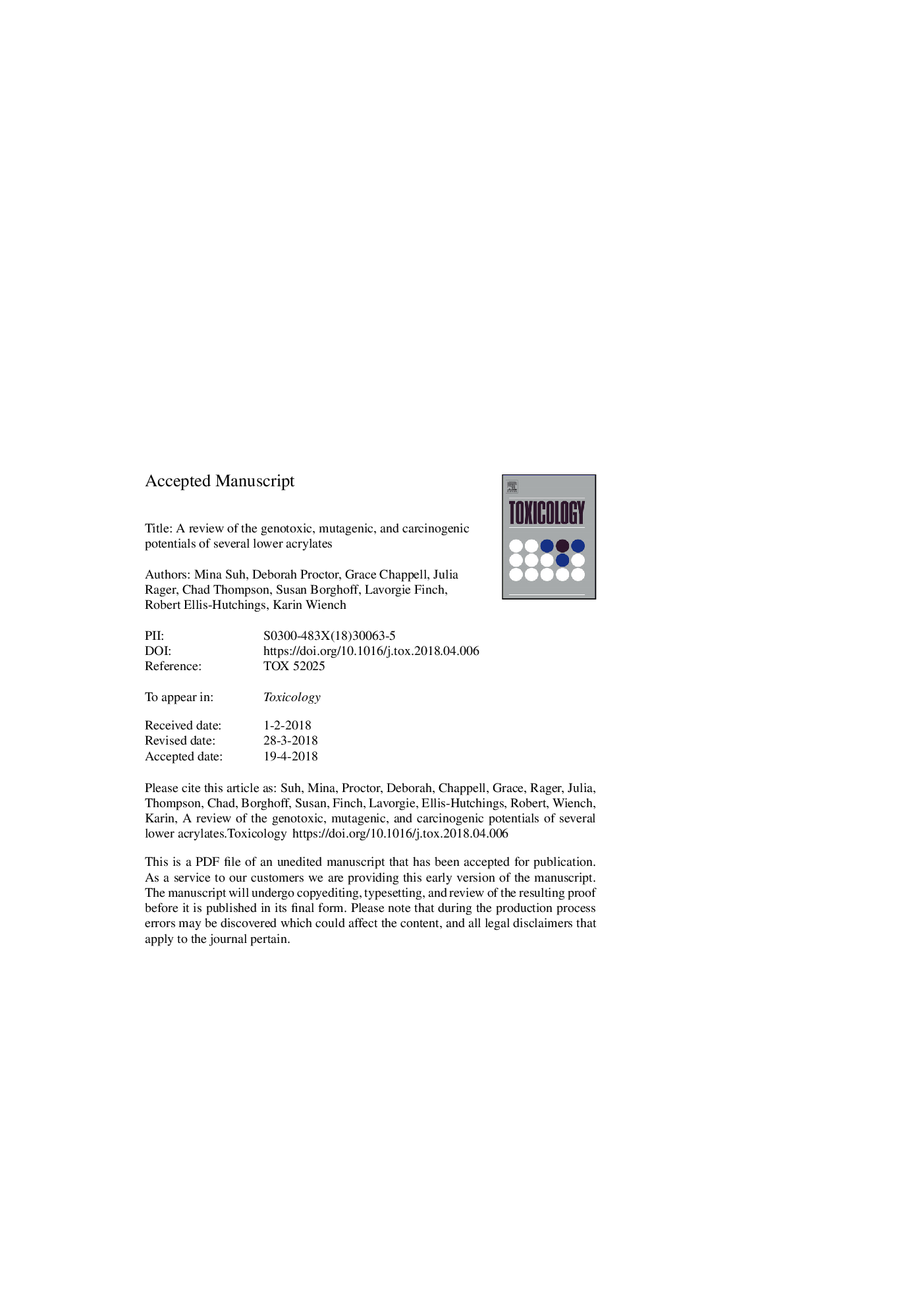| کد مقاله | کد نشریه | سال انتشار | مقاله انگلیسی | نسخه تمام متن |
|---|---|---|---|---|
| 8552753 | 1562273 | 2018 | 71 صفحه PDF | دانلود رایگان |
عنوان انگلیسی مقاله ISI
A review of the genotoxic, mutagenic, and carcinogenic potentials of several lower acrylates
ترجمه فارسی عنوان
بررسی پتانسیل های ژنوتوکسی، جهش زا و سرطان زائی چند آکریلات پایین
دانلود مقاله + سفارش ترجمه
دانلود مقاله ISI انگلیسی
رایگان برای ایرانیان
کلمات کلیدی
موضوعات مرتبط
علوم زیستی و بیوفناوری
علوم محیط زیست
بهداشت، سم شناسی و جهش زایی
چکیده انگلیسی
Lower alkyl acrylate monomers include methyl-, ethyl-, n-butyl-, and 2-ethylhexyl acrylate. These acrylates are used in the manufacture of acrylic polymers and copolymers for plastics, food packaging, adhesives, and cosmetic formulations. Although there is limited potential for human environmental exposure, occupational exposure can occur via inhalation and dermal contact. Recently, new genotoxicity data have been generated, along with in silico and in vitro read-cross analyses, for these acrylates. The availability of high-throughput screening (HTS) data through the ToxCastâ¢/Tox21 databases allows for consideration of computational toxicology and organization of these data according to the ten key characteristics of carcinogens. Therefore, we conducted a comprehensive review to evaluate the mechanistic, toxicokinetic, animal, and human data, including HTS data, for characterizing the potential carcinogenicity, mutagenicity, and genotoxicity of these acrylates. Toxicokinetic data demonstrate that these acrylates are metabolized rapidly by carboxylesterase hydrolysis and conjugation with glutathione. HTS data demonstrated an overall lack of bioactivity in cancer-related pathways. Overall, the genotoxicity and mutagenicity data support a cytotoxic, non-genotoxic mechanism for these acrylates. Cancer bioassay studies conducted by the oral, dermal, and inhalation routes in animal models with these acrylates did not show any increase in tumor incidence, with two exceptions. At high doses, and secondary to chronic site-of-contact irritation and corrosion, rodent forestomach tumors were induced by oral gavage dosing with ethyl acrylate, and skin tumors were observed following chronic dermal dosing with 2-ethylhexyl acrylate in C3H/HeJ inbred mice (a strain with deficiencies in wound healing), but not in the outbred NMRI strain. For both dermal and forestomach cancers, tumorigenesis is secondary to high doses and long-term tissue damage, shown to be reversible. With evidence that these chemicals are not genotoxic, and that they cause forestomach and dermal tumors through chronic irritation and regenerative proliferation mechanisms, these acrylates are unlikely to pose a human cancer hazard.
ناشر
Database: Elsevier - ScienceDirect (ساینس دایرکت)
Journal: Toxicology - Volumes 402â403, 1 June 2018, Pages 50-67
Journal: Toxicology - Volumes 402â403, 1 June 2018, Pages 50-67
نویسندگان
Mina Suh, Deborah Proctor, Grace Chappell, Julia Rager, Chad Thompson, Susan Borghoff, Lavorgie Finch, Robert Ellis-Hutchings, Karin Wiench,
